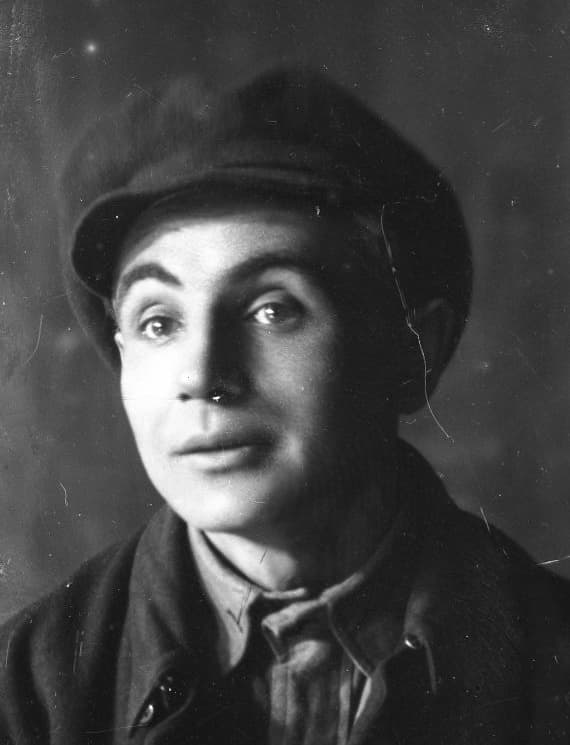Based on the play by Ivan Karpenko-Karyi
Premiere: February 3, 1927
Director: Favst Lopatynskyi
Artists: Maiia Symashkevych, Valentyn Shkliaev
Composer: Pylyp Kozytskyi
Conductor: Bohdan Kryzhanivskyi
Potocki – Ivan Marianenko
Smigelski – Stepan Shahaida
Rzeźnicki – Les Podorozhnyi
Jaworski – Marian Krushelnytskyi
Kaczyńska – Hanna Baiivna
Kasia – Zinaida Pihulovych
Rothmeister – Demyd Babenko
Sava Chalyi – Les Serdiuk
Zosia – Nadiia Tytarenko, Olimpiia Dobrovolska
Sava’s Armor-Bearer – Mykola Ivaniv
Baba – Klavdiia Pilinska
Pages – Yaroslava Kosakivna, Hanna Lor
Polish Cossacks – Damyd Babenko, Mykola Ivaniv, Hryhorii Kozachenko, Hnat Khodkevych
Noblewomen: Lidiia Krynytska, Hanna Lor, Yevheniia Petrova, Klavdiia Pilinska, Iryna Steshenko
Noblemen: Ivan Havryshko, Mykola Ivaniv, Mykhailo Zhadanivskyi, Petro Masokha, Mykola Nazarchuk, Mykola Savchenko, Kuzma Dikhtiarenko
Hnat Holyi – Danylo Antonovych
Haidamaka – Kuzma Dikhtiarenko
Medvid – Oleksandr Romanenko
Kravchyna – Borys Drobynskyi
Horytsvit – Semen Svashenko
Kulbaba – Vasyl Stetsenko
Znakhar – Hnat Khodkevych, Serhii Karpenko
Peasant Women: Nataliia Pylypenko, Yevheniia Petrova, Antonina Smereka, L. Stanislavska, Iryna Steshenko
Sava Chalyi, based on the play by Ivan Karpenko-Karyi, opened at the Berezil Theater on February 3, 1927.
Sava Chalyi didn’t make it into the theater’s repertoire by chance: director Favst Lopatynskyi had a noticeable interest in the historical realities of Ukraine. In 1926 he stages Cossack Holota at the State Theater for Children and Youth. In analyzing Lopatynskyi’s creative path, theater critic Natalia Yermakova emphasized that during this period he actively focused on material about Ukrainian history: “Subsequent events in F. Lopatynskyi’s creative life show examples of a tangible correction of direction, although thematically all his works are about the past political history of Ukraine. The struggle for independence becomes the main object of his artistic endeavors.”
In analyzing the work of Ukrainian artists of the previous generation, the brightest examples of which were the luminaries (Mykola Sadovskyi, Panas Saksahanskyi and Ivan Karpenko-Karyi), Lopatynskyi himself wrote that “in the atmosphere of the oppressively Russifying Tsarist government” during pre-revolutionary times one of their areas of focus was the “awakening of national consciousness of the unnationalized masses.” That is the goal he set for himself.
Sava Chalyi is one of Karpenko-Karyi’s best historical dramas. The story of a sincere patriot who decides to “see peace” in the eyes of the enemy of Ukrainians – Polish Hetman Potocki – ends with his moral and physical death.
Lopatynskyi had only a few minor issues with the text and staged the play in the theater with almost no changes. He wrote: “Karpenko, as a great playwright of his time, with just a few eloquent, clear strokes was able to paint brilliant theater characters. Each character in the play is a living, full-blooded Rubenesque figure, so to speak, with meat and bones. Every role is extraordinary material for acting.”
Theater critics highlighted the great acting. K. Studynskyi wrote that the role of Polish Hetman Potocki as played by Ivan Marianenko “could hardly have been played better by a Polish artist.” Yurii Smolych wrote that Danylo Antonovych as Hnat Holyi (the antagonist of Sava Chalyi, who doesn’t betray his cause and continues to defend the rights and freedoms of Ukrainians) was a strong figure who got the audience on his side. Critics singled out Oleksandr Serdiuk’s portrayal of the main character. “Sava,” said Studynskyi, “with all his impulses, hesitations, doubts, despair, pain in his soul and anxiety, couldn’t have found a better actor than this…” Smolych felt that Lopatynskyi condemned Sava, condemned his actions, but the power of “the pangs of conscience” only underscored the director’s reluctance towards black and white characters. But in condemning the hero he didn’t make him completely evil. He gave the other actors a similar task: “…the directing tried to avoid all sorts of devil-making of characters in Sava Chalyi,” wrote Lopatynskyi.
Theater director Les Kurbas, demanding of himself and his colleagues, had a cool attitude towards the production by his favorite student and on the day of the premiere wrote in his diary about the show’s many shortcomings. But he singled out Oleksandr Serdiuk and Nadiia Tytarenko because they had “definitely grown” as actors. Kurbas also worked on the play before its opening. Researcher of Ivan Marianenko P. Terniuk noted that during a day and night of “hellish rehearsing” the director managed to raise the performers’ creative spirit.
Marianenko himself recalled that in Lopatynskyi’s show “we didn’t get stuck in place, we looked for new ways of expression, new ways of conveying a classic work to the audience.”
Composer Pylyp Kozytskyi and artists Maia Symashkevych and Valentyn Shkliaev worked on the play. Natalia Yermakova noted that the artists demonstrated an understanding of the architecture and interiors of the time when creating the visual image of Sava Chalyi. Theater critic Petro Rulin wrote: “The most interesting design is the Potocki Palace hall, which with its tin background and bright lighting gives the impression of the luxuries of lordly life. Even more interesting is Sava’s room, where the thick ceiling beam, painted furnace, and hexagonal door beautifully show the main historical features of the homes of the Cossack elite.”
Despite Kurbas’s criticism, Favst Lopatynskyi’s show became a centerpiece of the Berezil stage, but was also his last work in this theater. Lopatynskyi makes the move into cinema. “Meanwhile, this theatrical production by F. Lopatynskyi, one of the brightest representatives of the Berezil school, shows the serious attempt to rethink the ‘radical experience’ and take a fresh look at the history of Ukraine,” writes Natalia Yermakova. Lopatynskyi leaves Berezil forever and Sava Chalyi marks a decisive culmination in the history of this outstanding artistic group.

